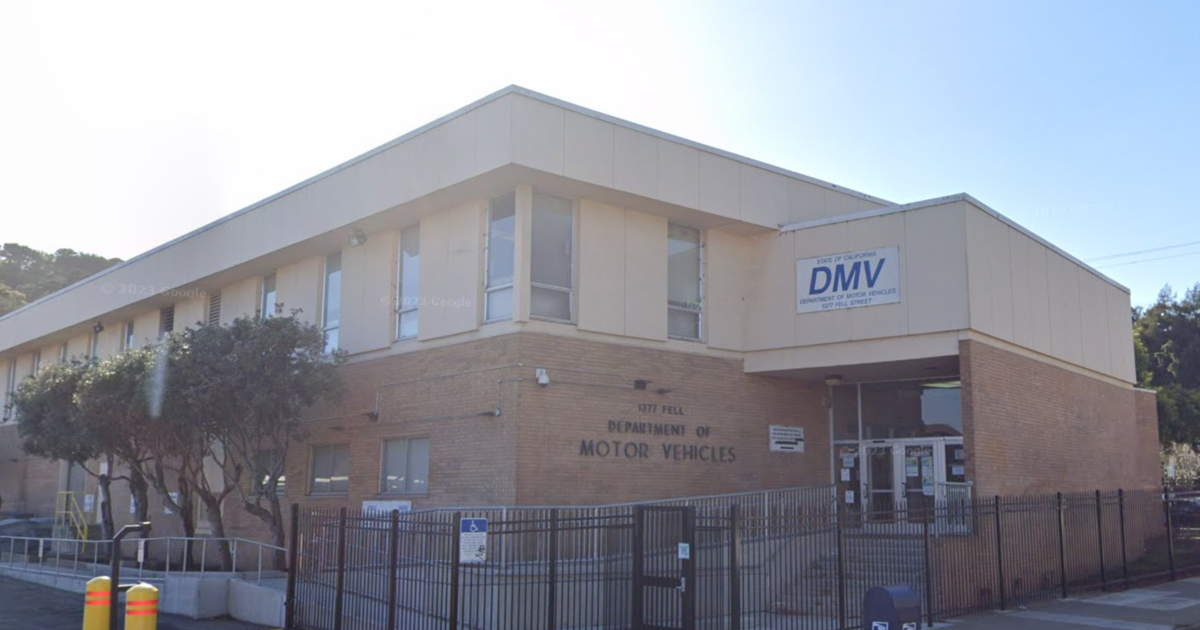Aging San Francisco DMV Office May Morph Into Affordable Housing
Aging San Francisco DMV Office May Morph Into Affordable Housing The San Francisco Standard


The California Department of Motor Vehicles Office in San Francisco to be Transformed into Affordable Housing

The California Department of Motor Vehicles office next to the Panhandle—a San Francisco landmark for local teenagers taking their first motorized foray into adulthood—could transform into a project with hundreds of affordable housing units.
A public request for qualifications put out by state officials on Thursday is seeking a developer to transform the 2.5-acre site at 1377 Fell St. into a mixed-use project that would replace the DMV office and erect new housing.
The existing office, which has stood on the site for 60 years, is in sore need of replacement due to aging infrastructure. But the land is also being put forward under California’s Excess Sites program, which is meant to leverage unused or underutilized state-owned property for affordable housing development.
As a state-owned parcel, the site is technically exempt from local zoning requirements, but the call-out to developers says the project should consider neighborhood character and community input. Although the request for qualifications does not specify exact affordability requirements, one of the specifications should be to “maximize depth and breadth of affordability while maintaining financial feasibility.”
Interested parties have until Nov. 22 to respond to the call, and state authorities said they expect to select a developer in the first quarter of next year.
As part of the proposals, the DMV laid out certain non-negotiable requirements, including a new field office built to specific standards and ensuring that the housing cannot interfere with the agency’s operations. Developers will also need to replace the public parking lot for the office, which contains 110 spaces. The new DMV office is expected to open by May 2027.
The selected developer is expected to receive a long-term, low-cost ground lease model similar to that awarded to local developer Build Inc. in 2008 for a previous housing proposal on the site. Those plans eventually fizzled.
Supervisor Dean Preston, whose district includes the DMV office, has made a campaign out of trying to redevelop the site into housing and introduced a resolution last year to that end.
Preston’s effort was paired with a push by Assemblymember Phil Ting, who helped convene a meeting with the DMV and related parties like the California Department of General Services and the California Department of Housing and Community Development.
“We have a strong mandate from the state and adopted locally on affordable housing,” Preston said. “I certainly think that it’s appropriate for the state to help our city reach that goal through directly funding affordable housing and looking at what opportunities there are on state-owned land.”
Soon after state officials put out a request for information to gauge interest in a potential redevelopment, Preston said about a dozen parties responded, pitching housing projects spanning 300 to 500 units on the site.
The DMV parcel is one of a number of vacant or state-owned properties that Preston has identified as potential sites for affordable housing in his district.
“One of our priorities has been to make sure these commitments to affordable housing in the housing element are real and not just on paper,” Preston said.
A 160-unit project at the site of the former McDonald’s at 730 Stanyan St. in Haight-Ashbury broke ground in June and is expected to be completed by the end of 2025.
The city also acquired a parking lot at 600 McAllister St. to develop 196 units of affordable housing as part of the deal struck in July with developer Related California, which sought to increase the size of its tower at 98 Franklin St.
Parcel K in Hayes Valley, which is operated as Proxy, has been earmarked for affordable housing for decades. The Mayor’s Office of Housing and Community Development is slated to open a call-out to developers for that site. However, a request for qualifications has yet to be issued.
Earlier this year, the Board of Supervisors passed a state-mandated plan that would require the city to permit more than 82,000 new housing units over the next eight years. Under the plan, more than half of those units are meant to be affordable
SDGs, Targets, and Indicators
1. Which SDGs are addressed or connected to the issues highlighted in the article?
- SDG 11: Sustainable Cities and Communities
- SDG 1: No Poverty
- SDG 10: Reduced Inequalities
- SDG 17: Partnerships for the Goals
2. What specific targets under those SDGs can be identified based on the article’s content?
- SDG 11.1: By 2030, ensure access for all to adequate, safe and affordable housing and basic services and upgrade slums.
- SDG 1.4: By 2030, ensure that all men and women, in particular, the poor and the vulnerable, have equal rights to economic resources, as well as access to basic services, ownership, and control over land and other forms of property.
- SDG 10.2: By 2030, empower and promote the social, economic and political inclusion of all, irrespective of age, sex, disability, race, ethnicity, origin, religion or economic or other status.
- SDG 17.17: Encourage and promote effective public, public-private and civil society partnerships, building on the experience and resourcing strategies of partnerships.
3. Are there any indicators mentioned or implied in the article that can be used to measure progress towards the identified targets?
- Number of affordable housing units created
- Depth and breadth of affordability in housing projects
- Financial feasibility of affordable housing projects
- Number of state-owned properties utilized for affordable housing
- Number of responses to the call for developers
- Number of housing units completed
- Rate of permitting and construction of housing units
SDGs, Targets, and Indicators
| SDGs | Targets | Indicators |
|---|---|---|
| SDG 11: Sustainable Cities and Communities | 11.1: By 2030, ensure access for all to adequate, safe and affordable housing and basic services and upgrade slums. | – Number of affordable housing units created – Rate of permitting and construction of housing units |
| SDG 1: No Poverty | 1.4: By 2030, ensure that all men and women, in particular, the poor and the vulnerable, have equal rights to economic resources, as well as access to basic services, ownership, and control over land and other forms of property. | – Depth and breadth of affordability in housing projects – Financial feasibility of affordable housing projects |
| SDG 10: Reduced Inequalities | 10.2: By 2030, empower and promote the social, economic and political inclusion of all, irrespective of age, sex, disability, race, ethnicity, origin, religion or economic or other status. | – Number of affordable housing units created – Number of state-owned properties utilized for affordable housing |
| SDG 17: Partnerships for the Goals | 17.17: Encourage and promote effective public, public-private and civil society partnerships, building on the experience and resourcing strategies of partnerships. | – Number of responses to the call for developers |
Behold! This splendid article springs forth from the wellspring of knowledge, shaped by a wondrous proprietary AI technology that delved into a vast ocean of data, illuminating the path towards the Sustainable Development Goals. Remember that all rights are reserved by SDG Investors LLC, empowering us to champion progress together.
Source: sfstandard.com

Join us, as fellow seekers of change, on a transformative journey at https://sdgtalks.ai/welcome, where you can become a member and actively contribute to shaping a brighter future.







